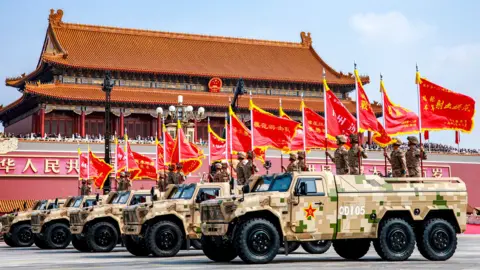The military might of the People's Republic of China was on full display in a parade marking the 80th anniversary of the end of World War Two on Wednesday.
Thousands of miles away, at the White House in Washington DC, Donald Trump was paying attention.
They were hoping I was watching, and I was watching, he said.
The American president didn't detail his thoughts about the massive celebration sprawled across Tiananmen Square, except that it was very, very impressive. The message from China – to Trump and to the world - seems fairly clear.
There is a new and growing center of power in the world and a new alternative to the American-backed order of the past century.
Trump's remarks during a meeting in the Oval Office with Polish President Karol Nawrocki were a culmination of a typically circuitous series of reflections on the happenings in China. It was a mix of ambivalence, grievance, and concern.
During a Tuesday podcast interview, Trump was nonchalant about the parade, saying he was not concerned about the Chinese show of force in front of world leaders, yet later expressed frustration on Truth Social for China not acknowledging the U.S.'s WWII contributions.
Trump's trade policies have led to increasingly complicated global dynamics, facilitating a closer rapport between China and Russia, while prompting fears across the Indo-Pacific that China’s military influence is growing. Economists and analysts are concerned these shifts may challenge the U.S.-centered global order.
As Trump's policies face legal setbacks and questions about their constitutional basis, it raises concerns about the effectiveness of his approach and its long-term implications for U.S. interests abroad.
Ultimately, the risks of Trump's high-stakes trade policies are becoming apparent against the backdrop of a revitalized Chinese military posture, marking significant geopolitical shifts that could redefine global alliances.




















